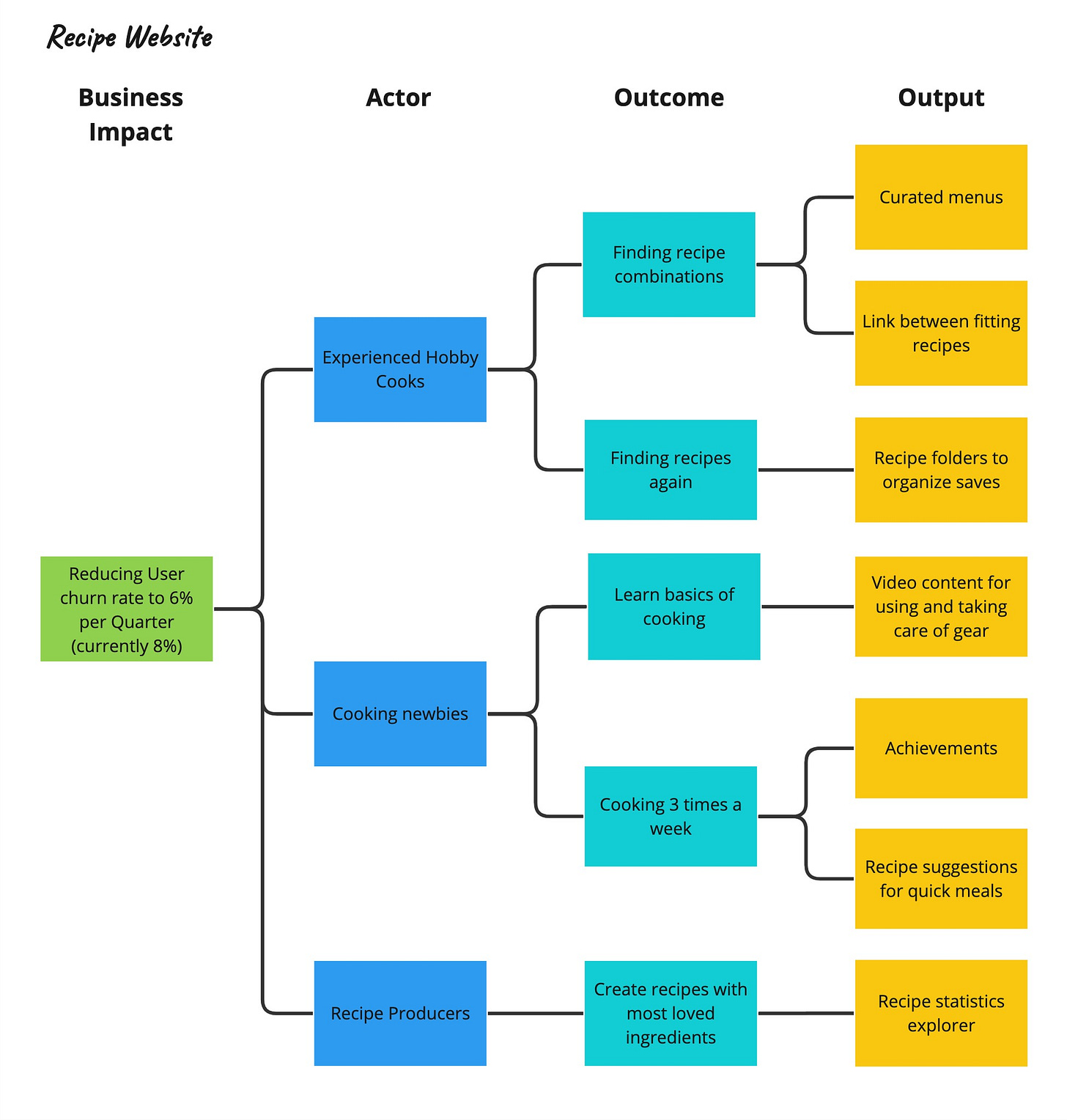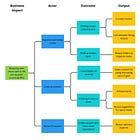Choosing where to start
Impact Maps and Prioritization
Looking again at our example, we have many options the product teams could start to work on. There are many paths we assume lead to the pursued Business Impact.
But don’t start to work on everything in parallel and stretch yourself thin. The most important thing is to focus.
The best way to prioritize is to concentrate on one Outcome per team. Focusing on one Outcome instead of a pre-defined Output enables the team to validate multiple solutions. And while exploring, the team will most likely find alternative solutions. This is part of the discovery work that needs to happen in the team. You can’t find out in a meeting room what will work and what not.
Throughout the discussion on assumptions, you should have already developed a good overview of some deeper insight and where you have enough confidence to start investing.
With seeing all the options in front of you, it is also easier to argue about what fits better to the overall strategy and what aligns well with the product vision. Are there any low-hanging fruits with high value visible? Do you already see any show-stoppers before you start? Do you think you should first test any key assumptions for one of the topics before going down this path?
I don’t think a magic formula exists for getting a priority item. If you found a recipe in your situation, I’d be happy to hear more about it.
Product decisions are complex. It heavily depends on where you are heading, your organization setup, your biased view, and many other factors. You can’t rationalize yourself out of this, so don’t try to make the perfect decision. Find the one that seems the best choice and enables you to get into action without losing the bigger picture. The great thing with an Impact Map is you have Plan B, C, D, … already in front of you.
A good format to come out from an Impact Mapping Session is a Statement like:
We believe helping [Actor] to [Outcome] will lead to [Business Impact].
To enable [Outcome], we think [Output1, or Output2, …] can be a solution, but we are open to exploring other solutions along the way.
Remember, the map is not there to take away your decision or to prevent the needed conversations. It ensures everybody is talking about a shared understanding of the situation.





